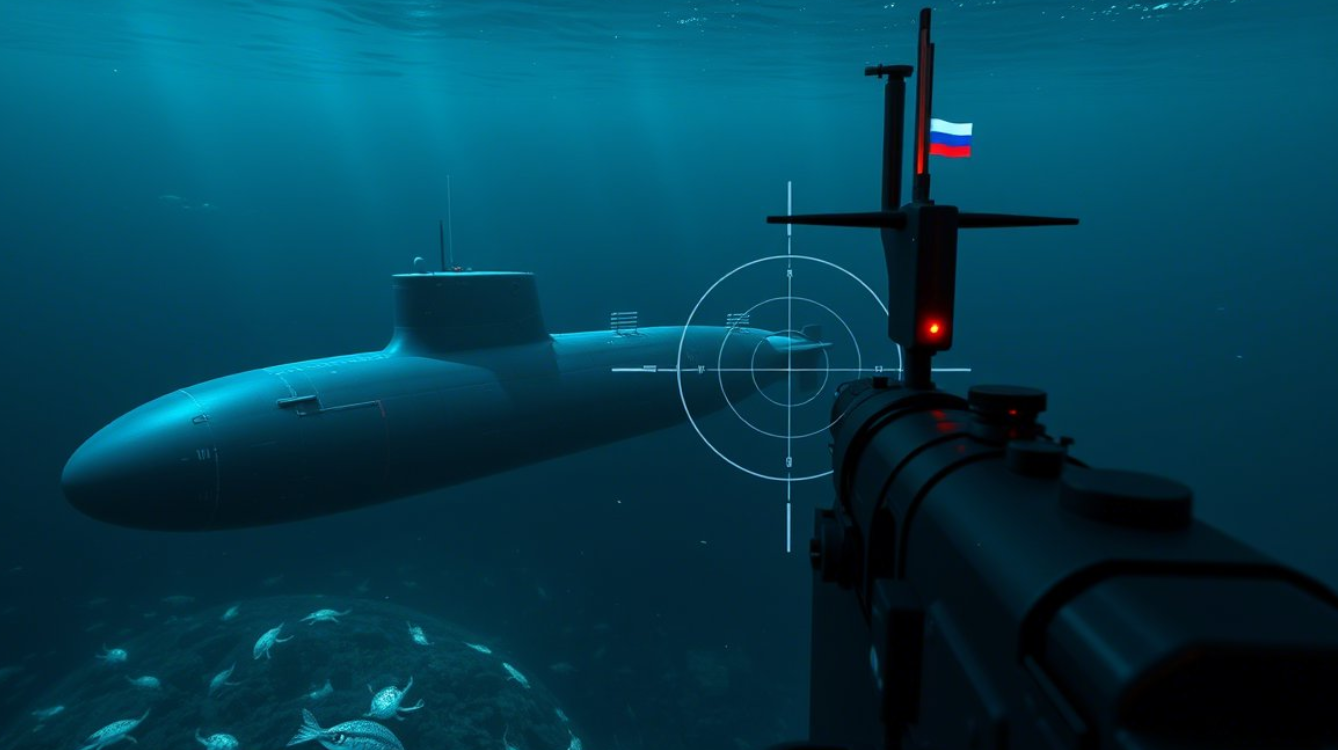After President Trump ordered U.S. nuclear submarines closer to Russia, Moscow hit back by deploying its advanced 5th-generation nuclear submarine, Knyaz Pozharsky, armed with Bulava missiles. Russia slammed Trump’s move as emotional posturing and showcased its own naval strength in response.
Russia Slams President Trump, Russia Deploys Its New 5th-Gen Nuclear Submarine
As tensions between the United States and Russia continue to escalate, a new layer of nuclear posturing is unfolding across global waters. On August 1, 2025, U.S. President Donald Trump made headlines after announcing via Truth Social that he had ordered the deployment of two nuclear submarines to undisclosed “appropriate regions” in response to what he called “highly provocative statements” from Dmitry Medvedev, the former Russian President and current deputy chairman of Russia’s Security Council.
Trump did not clarify whether these submarines were nuclear-powered or nuclear-armed, nor did he reveal their specific locations—consistent with traditional U.S. military secrecy around nuclear assets. However, the timing and tone of the statement have drawn attention across geopolitical circles.

The catalyst for Trump’s move appears to be Medvedev’s recent reference to the Cold War-era “Dead Hand” nuclear retaliation system and his rejection of Trump’s demand for a ceasefire in Ukraine within 10–12 days, failing which new sanctions would be imposed. Previously, the deadline stood at 50 days but was drastically shortened, amplifying pressure on the Kremlin.
While Trump emphasized that “words matter” and warned against unintended consequences, Moscow’s response has been measured, if not defiant.
Russia’s Countermove: Knyaz Pozharsky Enters Combat Service
On the same day Trump made his announcement, Russia took a major strategic step of its own. The Russian Navy’s newest Borei-A class nuclear-powered ballistic missile submarine, the Knyaz Pozharsky, officially entered combat service with the Northern Fleet. Armed with the powerful RSM-56 Bulava intercontinental ballistic missiles, the submarine represents Russia’s latest 5th-generation advancement in naval nuclear deterrence.
While the Kremlin has remained publicly silent on Trump’s specific move, this quiet deployment sends a powerful message of readiness and capability. It also marks a continuation of Russia’s long-standing strategy of maintaining a robust nuclear triad and emphasizing deterrence without dramatic public gestures.
Russia’s Political and Military Response
Viktor Vodolatsky, a senior member of the Russian Duma, responded to Trump’s announcement by downplaying the development. He asserted that Russian nuclear submarines are already stationed across the globe and capable of tracking U.S. assets at all times. “Let the U.S. subs sail—we’ve had them in our crosshairs for a long time,” he said. Vodolatsky also urged both nations to return to the negotiating table and find a way to de-escalate rising tensions that many fear could spiral into a third world war.
Fyodor Lukyanov, a prominent Russian foreign policy analyst and editor-in-chief of Russia in Global Affairs, offered a more critical take on Trump’s move, describing it as an “emotional and spontaneous” reaction rather than a calculated military maneuver. According to Lukyanov, the U.S. Navy itself was likely caught off guard by Trump’s public disclosure, since submarine deployments are usually kept classified. He added that while the rhetoric might continue, it remains unlikely to result in immediate military confrontation.
Market and Diplomatic Ripples
Trump’s announcement triggered a nearly 1% drop in the Moscow Exchange index, which fell 2,709.26 points by 8:01 PM local time on August 1. The market reaction underscores the economic sensitivity surrounding military tensions, even when they remain largely rhetorical.
Meanwhile, Russian Foreign Minister Sergei Lavrov took a more diplomatic tone. Responding to U.S. Secretary of State Marco Rubio’s parallel remarks, Lavrov reiterated the need to avoid direct military confrontation. He stressed that constructive dialogue remains crucial to prevent a catastrophic breakdown in global stability.
Analyst Insights: Rhetoric vs. Reality
Security experts around the world largely view Trump’s statement as a symbolic show of strength rather than a fundamental shift in military positioning. Hans Kristensen of the Federation of American Scientists pointed out that U.S. nuclear submarines are always positioned around the world and capable of launching strikes at any time. Moving them “closer” to Russia, he argued, makes little tactical sense and could even expose their locations.
Daryl Kimball from the Arms Control Association labeled Trump’s comments “irresponsible and inadvisable,” warning that such rhetoric could increase the risk of miscalculation at a time when diplomatic channels are already fraying.
Backdrop of Ukraine and Medvedev’s Role
This geopolitical standoff is happening against the backdrop of continued Russian aggression in Ukraine. On July 31, 2025, a major Russian strike on Kyiv killed at least 31 civilians, further straining relations. Trump has tied his submarine move and rhetoric directly to the stalled peace process and Russia’s unwillingness to meet his new deadline for a ceasefire.
Medvedev’s provocative statements, including nuclear references, are widely viewed as expressions of his hardline stance rather than official Kremlin policy. While he holds a significant position on Russia’s Security Council, many analysts believe his power is limited, and his statements often serve more for domestic posturing than international policy.
Conclusion: War of Words Meets War Machines
While Trump’s dramatic announcement about submarine deployments has intensified the war of words, the actual military balance has not significantly changed—yet. Russia’s response, both in rhetoric and in its quiet deployment of the Knyaz Pozharsky, signals a preference for demonstrating strength through capabilities rather than media statements.
The situation remains volatile, with both sides posturing heavily but avoiding direct confrontation for now. The next few days, particularly as Trump’s August 8 deadline approaches, will be critical in determining whether diplomacy can prevail or if the saber-rattling escalates further.
Disclaimer:
This article is based on publicly available sources and official statements. The current status of military deployments or classified defense strategies may not be fully disclosed. Readers are advised to interpret developments with a critical eye and await official confirmation where necessary.

